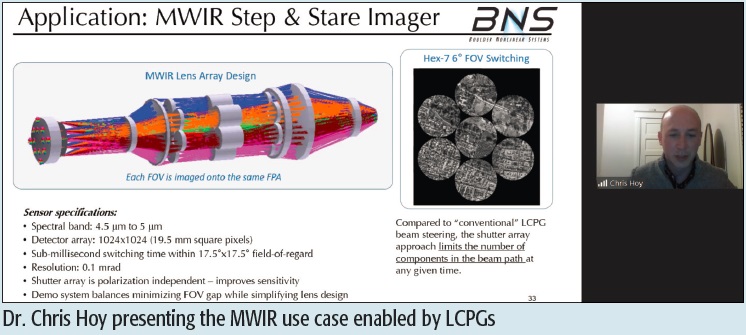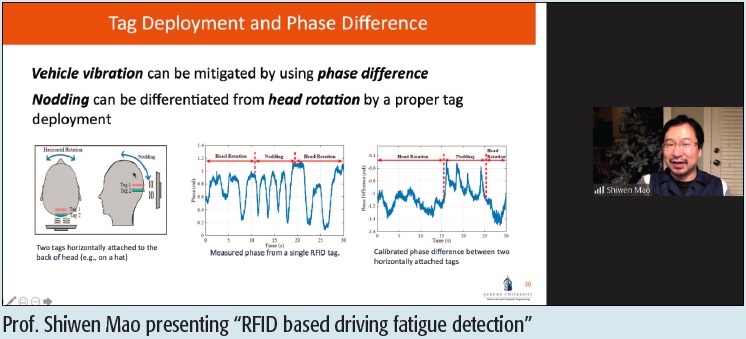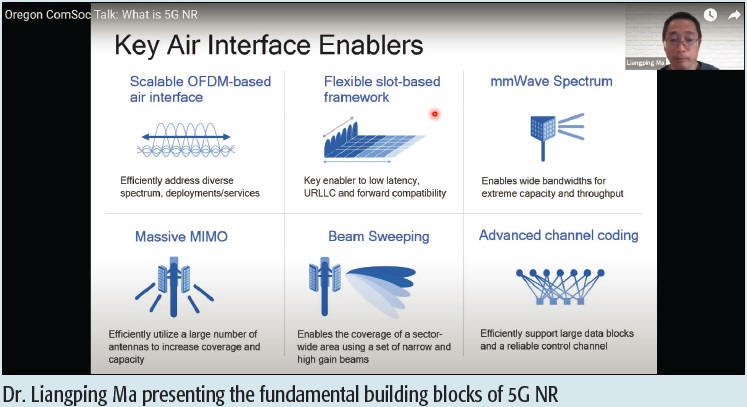
The COVID-19 pandemic, to say the least, has disrupted our normal lives, including holding and attending regular technical talks at a physical venue – an important part of the IEEE activities before the pandemic that had greatly benefited the IEEE members. Shortly after the outbreak of the pandemic, the IEEE ComSoc San Diego chapter quickly moved all technical talks online. Thanks to the communication technologies owing much to the contributions from members of IEEE ComSoc, holding meetings online turned out to be beneficial in terms of better connecting the speakers, the attendees, and the organizers, and overcoming geographical barriers.
The online platform made it much easier to invite speakers who otherwise might find it difficult to make time to travel. On March 23, 2021, with a joint invite of the ComSoc, Photonics, and Vehicular Technology Society San Diego chapters, Dr. Christopher Hoy, Vice President of Business Development & Technology Integration at Boulder Nonlinear Systems, Inc., Colorado, delivered a talk titled “Non-mechanical Optical Beam Steering with Polarization Gratings” remotely on Zoom. Dr. Hoy introduced the design and development of non-mechanical beam steering systems based on liquid crystal polarization gratings (LCPGs), which offered unique advantages, such as smaller size, weight and power, and having lower maintenance issues due to being inertial-less, over the traditional mechanical steering approach, and presented a few use cases including a time-of-flight camera, a coherent Doppler lidar and a midwave infrared (MWIR) broadband passive imager. Dr. Hoy answered many questions from the audience such as the switching speed, and pointed out some interesting techniques, for example, increasing the switching speed by increasing the temperature of the liquid crystal.
During the pandemic, the popular Distinguished Lecturer Tour (DLT) program became virtual out of safety concerns. The ComSoc San Diego chapter, in collaboration with the ComSoc Atlanta chapter, invited Prof. Shiwen Mao of Auburn University, Alabama, for a talk “RFID based Driving Fatigue Detection” on July 1, 2021. Prof. Mao presented his work that exploited radio frequency identification (RFID) tags as low-cost wearable sensors for driving fatigue detection. The research was carried out in an inter-disciplinary approach, spanning signal processing, communication, machine learning and data science. The audience were exposed to novel tools in machine learning and data science, not typically seen in ComSoc technical talks. The applications generated strong interests from the audience and the talk was very interactive.

The online platform made it convenient not only to invite speakers, but also to give talks. As a ComSoc DL, I delivered a talk titled “What is 5G NR?” to the ComSoc Oregon chapter on January 12, 2021. In the talk, I introduced the fundamental building blocks of the 5G radio access network, or the New Radio (NR). The audience asked a wide range of questions about topics such as beam management, bandwidth parts, and quality of service (QoS), on both standards and deployment aspects. I felt that the virtual DL talk was just as effective as physical DL talks that I had delivered before. Additionally, I did not have to go through the travel, which was time consuming and costly, relatively speaking.

Another benefit of the online meeting platforms is that, with cross advertising of events, the IEEE ComSoc San Diego chapter opens the opportunities for its members to access many more technical talks, and the same is true for ComSoc chapters at other locations.
There certainly is room for improvement for the online meeting platforms, for example, the lack of immersive experience of being in a physical conference room. It is not clear when immersive online meeting will be commercially available. But one thing for sure is that ComSoc members will play an important role in developing the needed technology, and it is reasonable to believe that we will be even better connected in the near future, even after the end of the pandemic.